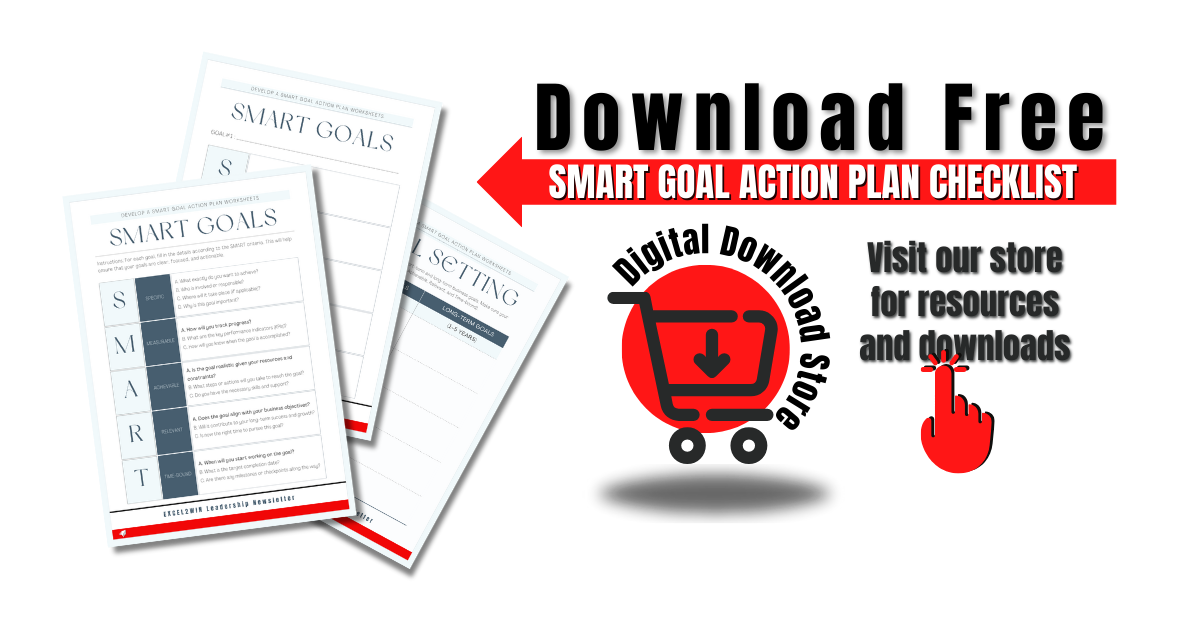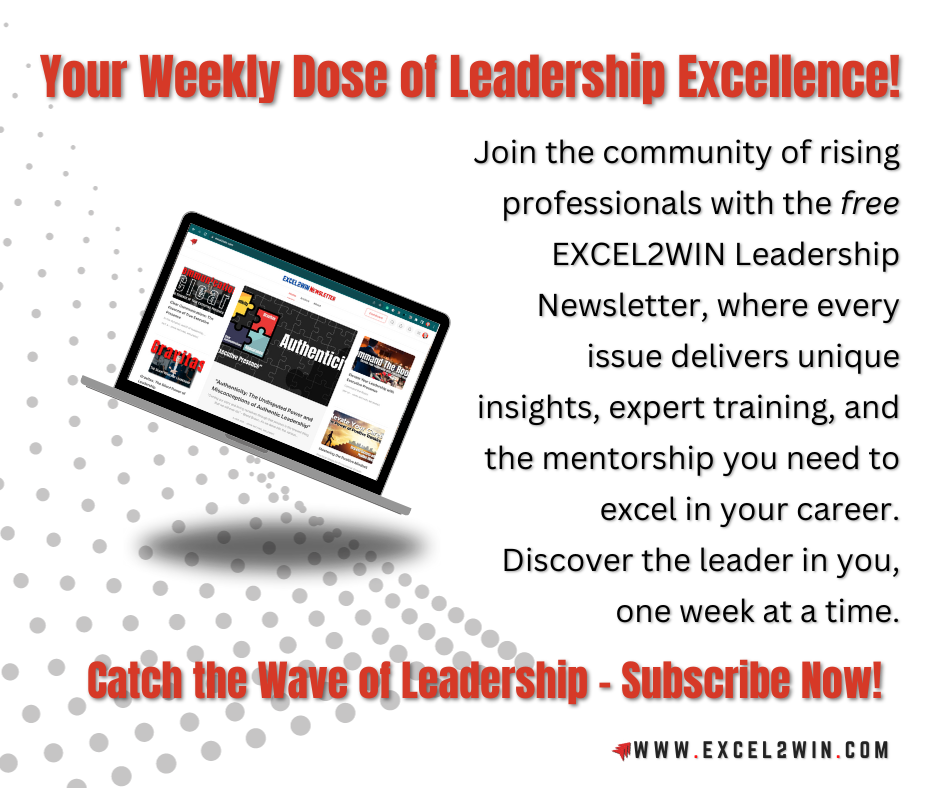How to Develop a SMART Goal Action Plan
A young professional walked into my office, frustrated with his career not going the way he expected. He seemed to lack direction. I asked him about his goals, and he replied, “To be successful.” When I requested further details, he paused and said nothing didn’t else, creating an awkward silence. After asking him more questions and engaging in conversation, it became apparent that he didn’t have clear goals or a roadmap. He only knew where he wanted to end up but had no action plan.
Creating an action plan is a pivotal step in the professional development journey. It’s the roadmap guiding you from where you are to where you aspire to be. Central to this plan are SMART goals - a concept that transforms vague ambitions into achievable milestones. In last week’s issue (” Setting the Stage for 2024: Vision Boards and Goal Setting”), I “glossed” over the SMART Goals. This article will guide you through creating an effective action plan centered around SMART goals, a vital tool in your leadership development arsenal.
Understanding SMART Goals
SMART is an acronym for Specific, Measurable, Achievable, Relevant, and Time-bound. Each element is essential in crafting a goal that is not just a wish but a well-defined target you can realistically hit.
Specific: Your goal should be well-defined and precise.; otherwise, you won’t be able to focus your efforts or feel truly motivated to achieve it. Answer the five ‘W’ questions: What do I want to accomplish? Why is this goal important? Who is involved? Where is it located? Which resources or limits are involved? In my past experience, I’ve encountered many professionals who can’t answer these questions.
Measurable: Setting measurable goals that can help you track your progress and maintain your motivation is crucial. Assessing your progress lets you stay focused, meet deadlines, and experience the excitement of getting closer to your goal. Just like road signs on the side of the highway, measurable goals indicate your progress on the journey.
Achievable: To be successful, your goal must be realistic and attainable. In other words, it should challenge your abilities but still be possible to accomplish. An achievable goal will address questions such as: How can I achieve this goal? How realistic is the goal considering other constraints, such as financial factors? I have encountered cases where frontline employees wanted to become Vice-Presidents (heads of their departments) within six months or less despite lacking experience, knowledge, or invested time.
Relevant: This step ensures that your goal aligns with pertinent other goals that are important to you. A relevant goal should be able to answer ‘yes’ to the following questions: “Does this goal feel like it’s worth pursuing at this time?” Does it align with our other efforts and needs? Am I the right person to work towards this goal?
Time-bound: Setting a target date for every goal is crucial. It provides a deadline to focus on and something to work towards. This aspect of the SMART goal criterion helps prevent everyday tasks from overshadowing your long-term goals.
Crafting Your Action Plan
Now that you understand SMART goals, the next step is to integrate them into a comprehensive action plan.
Step 1: Set Your Vision
Start by envisioning what you want to achieve in your career. This vision should be ambitious and motivating, serving as the guiding force for your journey. I discussed this in last week’s issue, “Setting the Stage for 2024: Vision Boards and Goal Setting.” Take a moment to read it.
Step 2: Break Down Your Vision into SMART Goals
Transform your vision into actionable steps by setting SMART goals. For instance, if your vision is to be a team leader within your organization, a SMART goal could be: “To enhance my team management skills by completing a certified leadership course by the end of the year.”
Step 3: Create a Timeline
When setting goals, establish a timeline by setting deadlines for each step and prioritizing them based on relevance and urgency.
Step 4: Identify Resources and Constraints
Determine what resources you need to achieve your goals - courses, mentors, or specific tools. Simultaneously, identify potential constraints and think about how to mitigate them.
Step 5: Implement, Monitor, and Adjust
Put your plan into action. Regularly monitor your progress against your goals and timelines. Be flexible – if circumstances change, be ready to adjust your goals while keeping your overall vision in mind.
Embracing the SMART Philosophy
Adopting SMART goals in your action plan isn’t just about ticking off objectives. It’s not a checklist. Its philosophy encourages clarity, commitment, realism, and urgency. Here’s why embracing this philosophy can transform your career:
Clarity: SMART goals bring clarity and focus, helping you effectively channel your efforts.
Motivation: Keeping motivation levels high with clearly defined goals and a roadmap for achieving them.
Accountability: When goals are measurable and time-bound, it instills a sense of accountability, an essential trait for any leader.
Flexibility: SMART goals are not rigid. They allow you to adapt and evolve as you grow professionally and circumstances change.
Success: By making your goals achievable and relevant, you set yourself up for success, creating a positive cycle of achievement and confidence.
To wrap things up, incorporating SMART goals into your action plan is a transformative step in your leadership journey. It provides a clear, structured, practical path to achieving your professional aspirations. Remember, the journey of a thousand miles begins with a single step. Let that step be a SMART one.
If you want more valuable insights and resources to enhance your leadership skills, I highly recommend subscribing to my EXCEL2WIN Leadership Newsletter. Stay updated with the latest leadership strategies, tips, and techniques to excel in your career. Don’t miss out - subscribe today and take your leadership journey to the next level! Download my FREE SMART Goal Action Plan Checklist PDF and turn your aspirations into achievable milestones. Don't miss out - it's free!
Here are three books that I've read that complement the article above. This is a great way to start the year.
"The 7 Habits of Highly Effective People" by Stephen R. Covey (Published in 1989): This book offers valuable insights on setting and achieving goals, emphasizing the importance of clarity, focus, and accountability. It provides practical tools and techniques to enhance personal and professional effectiveness, aligning closely with the principles of SMART goal setting discussed in the article.
"Atomic Habits: An Easy & Proven Way to Build Good Habits & Break Bad Ones" by James Clear (Published in 2018): This book explores the power of small habits in achieving significant results. It emphasizes the importance of specificity, measurement, and time-bound actions to create meaningful change. While it focuses more on habits than goal setting directly, its principles align well with the SMART goal philosophy discussed in the article.
"Drive: The Surprising Truth About What Motivates Us" by Daniel H. Pink (Published in 2009): This book delves into the science of motivation, highlighting the importance of autonomy, mastery, and purpose in setting and pursuing goals. While it may not align as closely with the specific SMART goal framework discussed in the article, it provides valuable insights on motivation and achieving success, which complement the concepts discussed.
Based on the principles and concepts of the book, these rankings align with the focus of the article on SMART goal setting and personal development.







